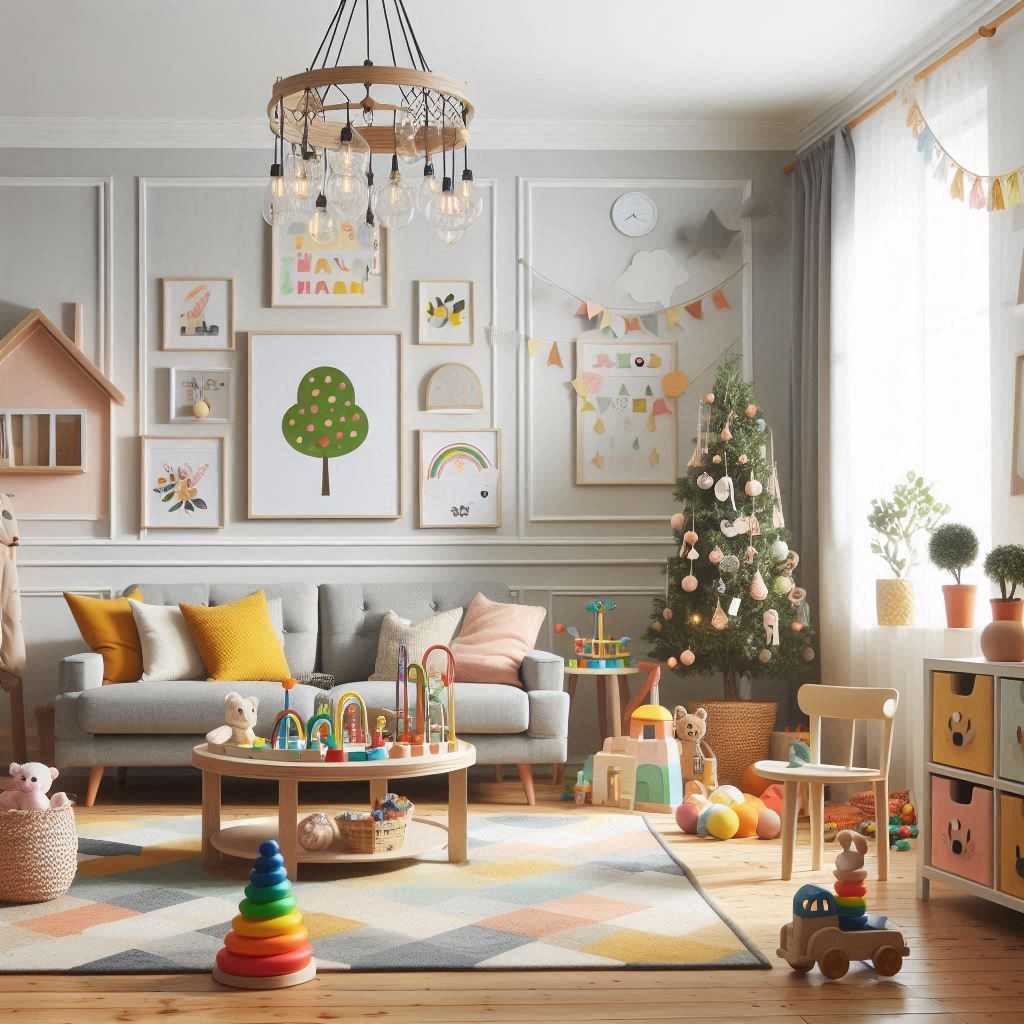
If you have a spare room in your home, why not transform it into a dedicated playroom for your children? A well-designed playroom provides a safe, engaging, and organised space where kids can explore their creativity, learn, and have fun. Whether you’re starting from scratch or repurposing an existing room, this guide will help you create the perfect play space for your little ones.
1. Choose the Right Room
Before you begin, consider which space in your home is best suited for a playroom. Ideally, the room should be:
- Close to the main living areas so you can keep an eye on the kids.
- Well-lit with natural light to create a bright and cheerful atmosphere.
- Spacious enough for different types of play, from arts and crafts to physical activity.
If space is limited, a section of a larger room, such as a living area or bedroom, can still be transformed into a mini play zone.
2. Plan the Layout
A good layout ensures the playroom is functional and engaging. Consider dividing the room into different activity zones, such as:
- Creative Corner – A space for drawing, painting, and crafting with a child-sized table and chairs.
- Reading Nook – A cosy area with bookshelves, bean bags, or a small tent for quiet time.
- Active Play Area – Room for movement, such as a small climbing frame, play tunnel, or soft play mats.
- Toy Storage Section – Accessible bins and shelves to keep toys organised and encourage tidiness.
3. Choose Kid-Friendly Flooring
Children spend a lot of time playing on the floor, so choosing the right flooring is essential. Options include:
- Soft foam mats – Great for cushioning falls and easy to clean.
- Carpet or rugs – Provides warmth and comfort but may require more maintenance.
- Vinyl or laminate flooring – Durable and easy to wipe clean, perfect for arts and crafts.
If your budget allows, underfloor heating can be a great addition for extra comfort in colder months.
4. Use Smart Storage Solutions
Keeping a playroom tidy is easier with well-planned storage. Consider:
- Open shelves for books and toys.
- Clear plastic bins for small items like LEGO or puzzles.
- Storage benches or ottomans that double as seating.
- Wall-mounted organisers for arts and crafts supplies.
Labelling storage containers with pictures or words helps kids learn to clean up independently.
5. Decorate with Fun and Functionality in Mind
A playroom should be colourful and stimulating but not overwhelming. Some ideas include:
- Bright but calming colours – Soft pastels or cheerful tones can make the room inviting.
- Chalkboard or whiteboard walls – Encourages creativity and reduces the need for paper.
- Wall decals or murals – Easy to update as kids grow.
- Personal touches – Add framed artwork, family photos, or DIY crafts to make the space unique.
6. Ensure Safety First
Safety is a top priority when designing a playroom. Key precautions include:
- Securing heavy furniture to the wall to prevent tipping.
- Using childproof covers on electrical outlets.
- Choosing non-toxic paints and materials.
- Ensuring windows have secure locks or safety catches.
- Keeping small or hazardous items out of reach.
A soft play mat or padded edges on furniture can help prevent bumps and falls.
7. Make It Adaptable for Growth
As children grow, their interests change. Designing a playroom with flexibility ensures it remains useful for years. Consider:
- Adjustable shelving and storage.
- A modular seating area that can be reconfigured.
- A desk space for homework as they get older.
- Swapping out baby toys for more advanced games and activities over time.
Final Thoughts
Creating a playroom is an exciting project that can enhance your child’s playtime while keeping the rest of your home organised. By focusing on safety, smart storage, and engaging design, you can transform a spare room into a fun and functional space where your children can learn, grow, and create happy memories.
If you’re looking for help to create a playroom, remember you can post your job on Tradesmen.ie and get a number of quotes from rated carpenters, electricians, builders and lots more. With a range of professions available, you’re sure to find the perfect fit for your project.
Best of luck creating the perfect playroom!
Cheers
Oliver Dempsey
Tradesmen.ie
18 February 2025
General Tips for hiring a tradesman
Here are some tips to consider when hiring a tradesman:-
1. Ask for phone numbers of references so that you can check them out
2. Check insurance of the tradesman where insurance is required
3. Hire a suitably qualified architect, building surveyor or building engineer if the job is anything to do with a new build, building renovation or extension






